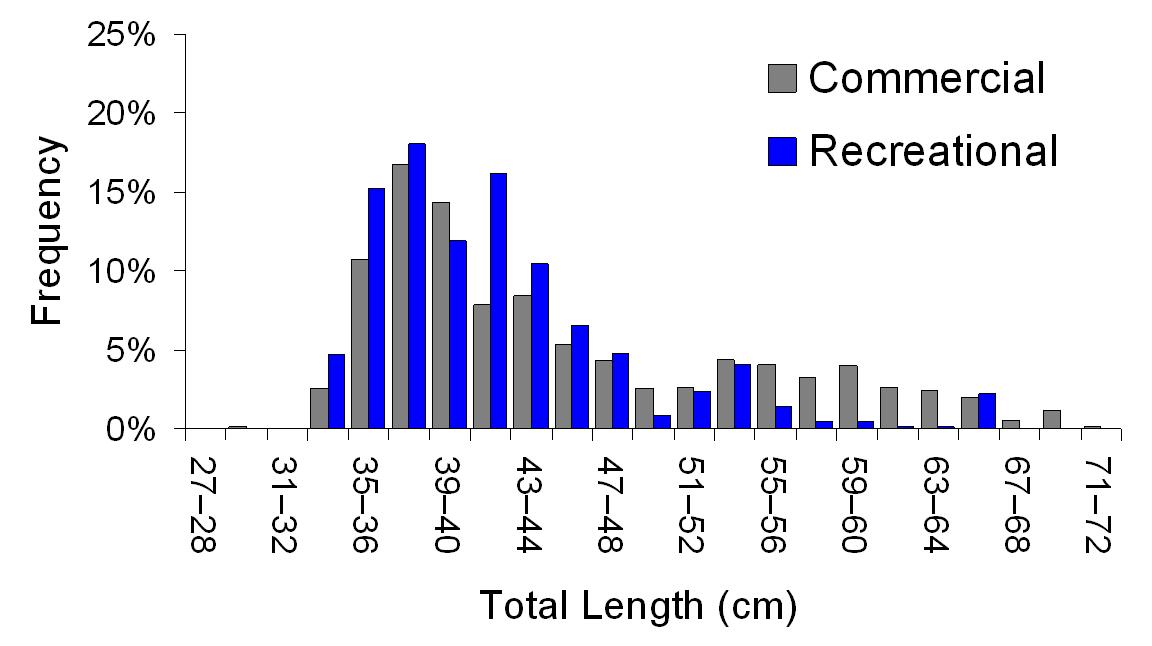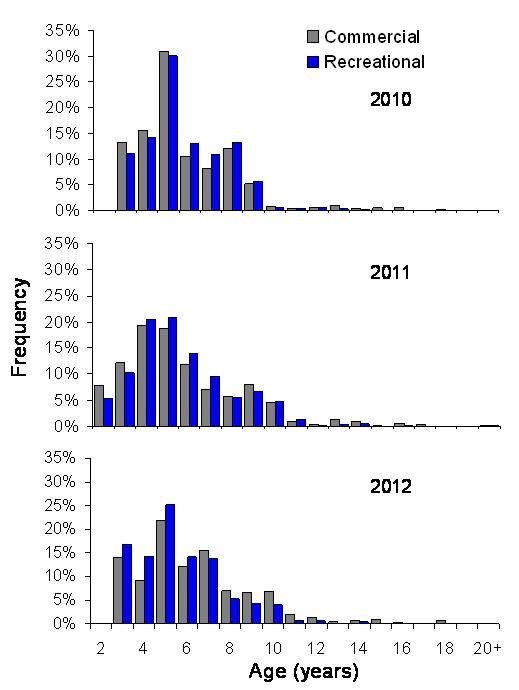Pearl perch monitoring
In Queensland, pearl perch (Glaucosoma scapulare) are generally caught offshore in waters deeper than 40 m from Mackay (approximately 21° S) to the Queensland–New South Wales border. Peak fishing season is spring through to autumn.
Pearl perch have a minimum legal size of 38 cm, an in-possession limit for recreational fishers of four fish and total allowable catch limit for commercial fishers of 15 tonnes. A closed season also applies to pearl perch throughout Queensland tidal waters from 15 July to 15 August.
Since 2006, a variety of strategies have been used to collect biological information (length, sex and age) for pearl perch caught in Queensland waters. The information is used to help assess the status and sustainability of the stock. Pearl perch are currently assessed as depleted.
Fish length
Length information collected indicates that both recreational and commercial fishers retain a similar size range of fish, but larger fish (e.g. in 2012, fish ≥ 55 cm) comprised a greater percentage of the commercial catch compared with the recreational catch (see length frequency graph).
© Queensland Government
© Queensland Government
Fish Age
Biological samples collected during the monitoring program include otoliths (ear bones). Otoliths contain growth rings which are visible once sectioned and viewed under a microscope. These growth rings are then counted to help estimate the fish's age.
Between 2010 and 2012 most of the pearl perch kept by fishers were between three and seven years old. Very few fish aged 10 years or older were observed in the catch (see age frequency graph).
The length and age information collected during the sampling program indicate variable growth rates. For example, in 2012, the longest pearl perch measured was 71 cm and was aged at 16 years old but the oldest fish, which was aged at 20 years old, only measured 65 cm in length. The variability in growth rates means a significant number of three, four and five year old pearl perch are less than 35 cm, and are therefore protected by the minimum legal size limit.
A recent study showed that pearl perch can be reproductively mature at two to three years of age. Which means that they can spawn for several years before they reach the minimum legal size. This variability is an important consideration when assessing the sustainability of the fishery.
How old is your fish?
The age information collected during the monitoring program has been used to illustrate the age-at-length relationship for pearl perch. After measuring the total length of your fish, you can estimate its age using the age-at-length graph. For example a 49-50 cm pearl perch is most likely six years of age but could easily be as young as four or as old as nine.
Support and assistance
Thank you to everyone who has generously assisted with the monitoring of pearl perch by donating frames or allowing us to measure their fish.


